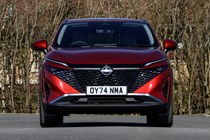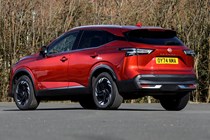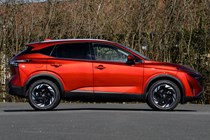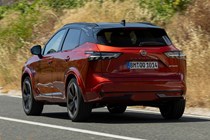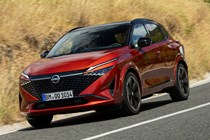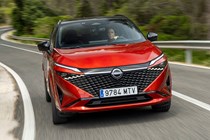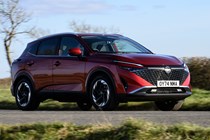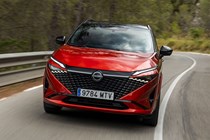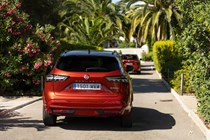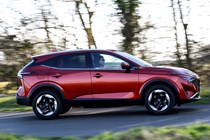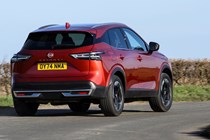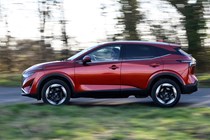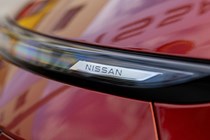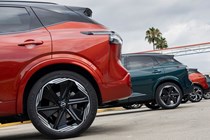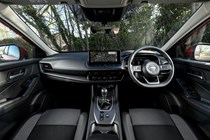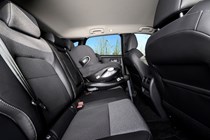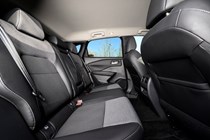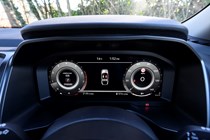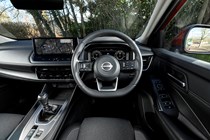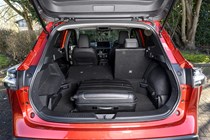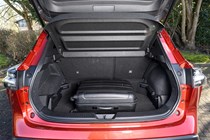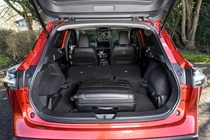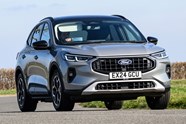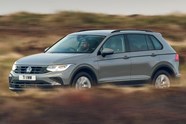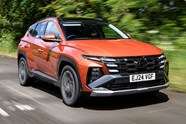
Nissan Qashqai review: still as good as ever, now (slightly) improved
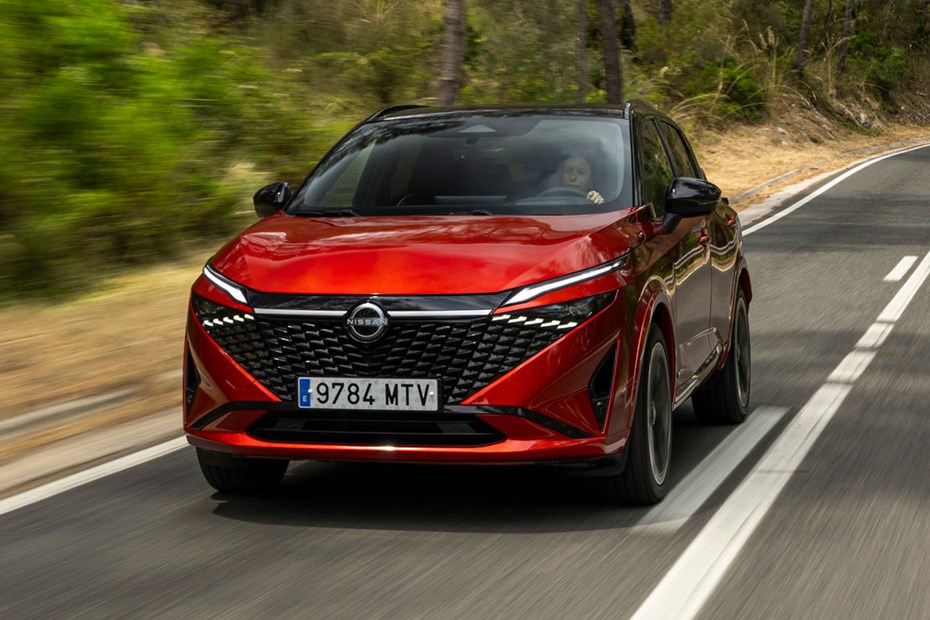
At a glance
| Price new | £30,615 - £43,300 |
|---|---|
| Used prices | £11,436 - £33,660 |
| Road tax cost | £195 - £620 |
| Insurance group | 11 - 30 |
Get an insurance quote with

|
|
| Fuel economy | 39.9 - 62.8 mpg |
| Miles per pound | 5.9 - 9.2 |
| Number of doors | 5 |
| View full specs for a specific version | |
Available fuel types
Petrol
Hybrid
Pros & cons
- High-quality interior
- Good infotainment screen
- New hybrid is more efficient
- Slightly fidgety ride quality
- Poorly spaced manual gearbox
- No load-through hatch in boot
Nissan Qashqai SUV rivals
Overview
Should you buy a Nissan Qashqai?
Yes. The latest Nissan Qashqai is one of the more recommendable family SUVs on sale. It’s spacious, packed with easy-to-use technology, pleasant to drive (in automatic form) and it’s available with a clever (and freshly updated) full hybrid powertrain that promises strong efficiency and refinement around town.
However, some rivals do things better. The Skoda Karoq is more comfortable, even more spacious and better suited to long-distance drivers as it’s available with a choice of frugal diesel engines. And there’s a lot to recommend about the latest Volkswagen Tiguan – namely its excellent plug-in hybrid powertrain and strong build quality – if you’re prepared to live with its annoying touch-sensitive controls.
There are cars in this class that are a lot more fun to drive, too, such as the Ford Kuga and the pin-sharp but often overlooked Mazda CX-5. So, if you’re the sort who wants more mechanical substance to go with your SUV style, these might be more up your street.
Still, if you’re simply looking for a reliable SUV to haul your family around in (which is arguably all any car in this class needs to do), the Qashqai remains a solid choice. And that’s probably why Nissan still can’t build them fast enough to fulfil demand.
What’s new?
This is the new version of the Nissan Qashqai. Yes, I know it looks exactly the same as the old car, but Nissan has made some significant changes under the bonnet to make it more efficient and even quieter than the outgoing model.
It gets an updated version of the brand’s E-Power hybrid system, which pairs a new and ruthlessly frugal 1.5-litre four-cylinder petrol engine with the same electric motor as the latest Nissan Leaf. The result? More power, fewer CO2 emissions, a theoretical maximum range of 620 miles and 28kg shaved off the car’s kerb weight. So far, so good.
Nissan hasn’t changed much else about the car, which isn’t such a bad thing because it was already a very accomplished family SUV. You get the same tech, the same amount of space inside and the same rugged looks – a huge reason why so many UK buyers flocked to the Qashqai when it was first launched back in 2006.
Hybrid power isn’t your only option, either. If you’re not ready for electrification, Nissan has you covered with a choice of two 1.3-litre mild-hybrid petrol engines. The cheaper option has 140hp, with a punchier 158hp version sitting above it. Plus, depending on trim, you can have it with either a manual or an automatic gearbox and either front- or four-wheel drive.
You have five specifications to choose from, badged Acenta Premium, N-Connecta, N-Design, Tekna and Tekna+. Prices start from £30,615 – and standard kit includes rear parking sensors, a rear-view camera, dual-zone climate control and a 12.3-inch infotainment system with wireless Android Auto and Apple CarPlay.
Prices for the flagship Tekna+ start from a shade over £39,000. Upgrades include 20-inch alloy wheels, quilted leather upholstery, massaging front seats, a premium Bose stereo and a more sophisticated multi-link rear suspension system.
I’ll admit, these prices looks quite steep compared to the £25,000-ish Dacia Bigster, but the Qashqai still jostles for the top spot in the UK’s new car sales charts. Plus, Nissan needs bat away newer competitors such as the Volkswagen Tiguan and Renault Austral.
Over the next few pages, we’ll review each aspect of the Nissan Qashqai, breaking down its practicality, interior quality, technology, driving experience and running costs before offering our final verdict on the car. If you’re curious about how we reached our verdict, make sure to check out our how we test cars explainer page for a rundown of our process.



